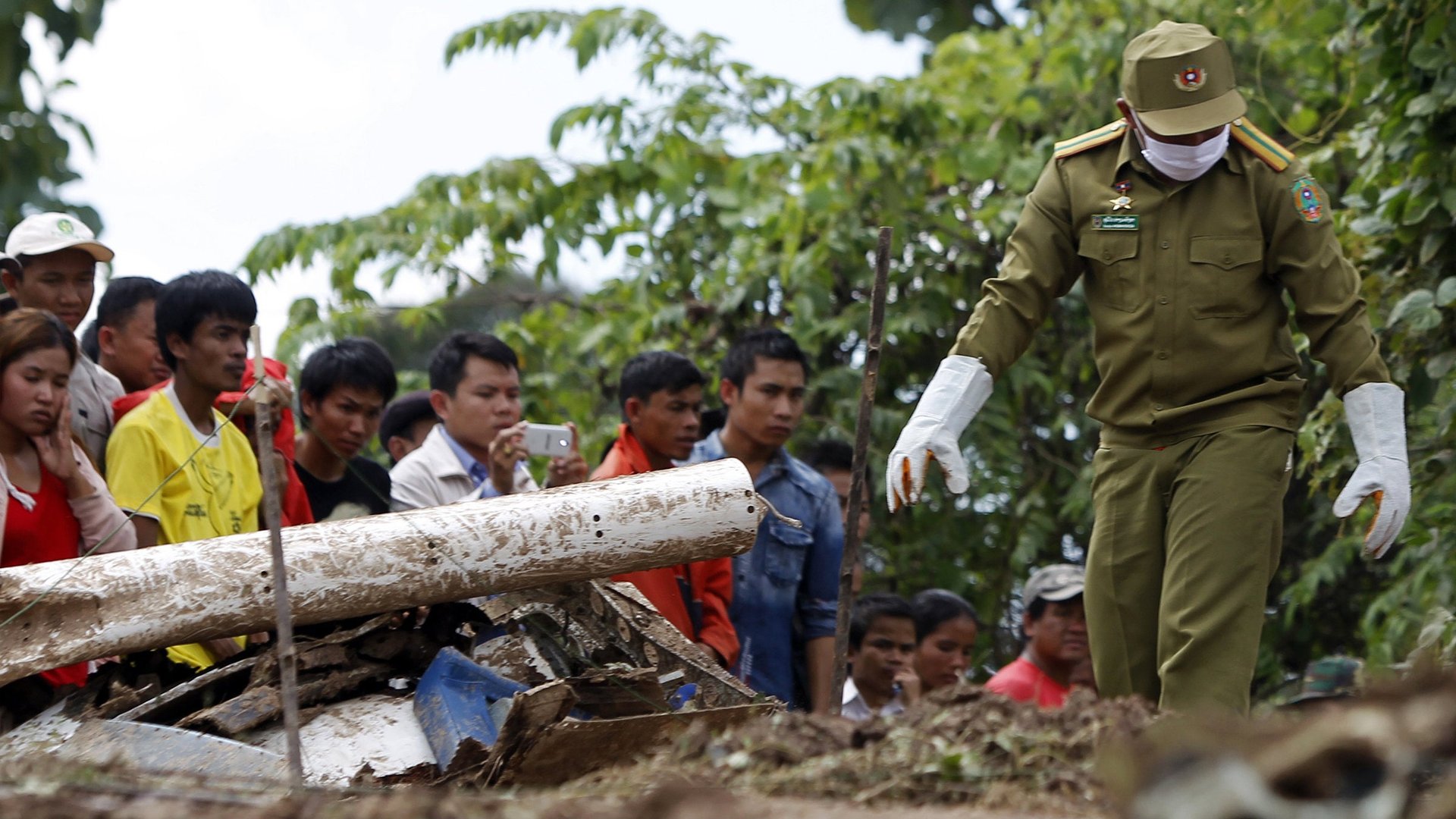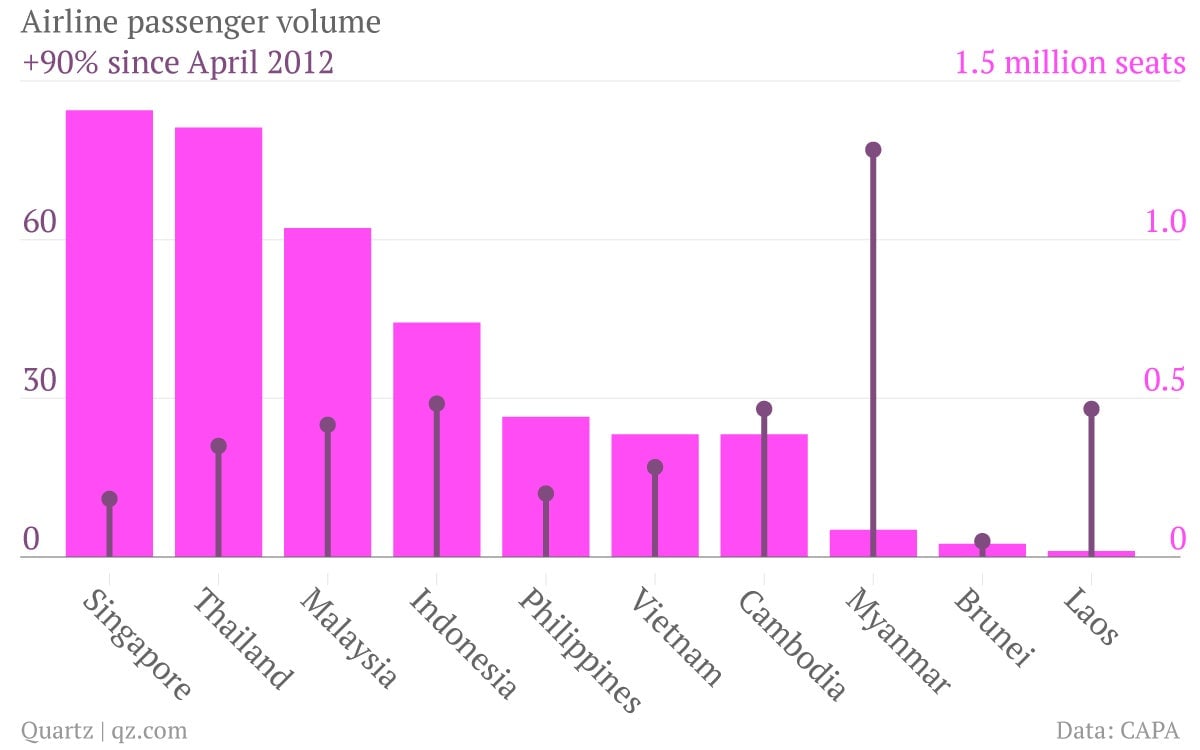What the fatal plane crash in Laos tells us about the rapid growth of aviation in Southeast Asia
A Lao Airlines plane carrying 47 people crashed into the Mekong River yesterday, with all passengers and crew presumed dead. The state-run airline’s ATR 72-600 twin-engine turboprop was en route from the capital of Vientiane to the southern city of Pakse, a popular tourist destination.


A Lao Airlines plane carrying 47 people crashed into the Mekong River yesterday, with all passengers and crew presumed dead. The state-run airline’s ATR 72-600 twin-engine turboprop was en route from the capital of Vientiane to the southern city of Pakse, a popular tourist destination.
“Upon preparing to land at Pakse Airport the aircraft ran into extreme bad weather conditions and was reportedly crashed into the Mekong River,” the airline said in a statement on its Facebook page. The flight’s manifest showed the geographical diversity of visitors who travel in Southeast Asia: In addition to those from Laos, there were passengers from France, Australia, Thailand, South Korea, Vietnam, Canada, China, Malaysia, Taiwan, and the US.
Air traffic in the region has been increasing in recent years, particularly in Southeast Asian countries like Indonesia, Myanmar, Cambodia, and Laos, fueled by more tourism and a growing middle class, but also taxing the region’s airports, air traffic control, and other infrastructure. Total seat volume has climbed 20% over the last 18 months to 5.6 million per week, according to the Centre for Asia-Pacific Aviation (CAPA), and every country in the region except tiny Brunei has seen double-digit percentage increases.

Low-cost carriers like Air Asia, Jetstar, and Tiger Airways make up more than 50% of seats in Southeast Asia, but low-cost doesn’t mean they’re using old planes—on the contrary, low-cost airlines typically use a single up-to-date model of airplane to keep operating costs down.
“Increasing air traffic means crashes will increase as well,” Willem Niemeijer, co-founder of Khiri Travel Group, which operates throughout Southeast Asia, told Quartz. While stressing he doesn’t think yesterday’s crash indicates that Lao Airlines is suffering from any unique safety challenges, Niemeijer said the region “needs to look at improving air infrastructure and pursue an open skies policy.” In Laos, for example, it’s harder for other airlines to operate, he said, since the government-owned Lao Airlines dominates the market.
While it’s difficult to compare the relative safety rates for flights in the region, there have been a number of incidents this year that have left travelers jittery.
Last month a Thai Airways flight from Guangzhou, China skidded off the runway upon landing in Bangkok. A 737 flown by Indonesian budget airline Lion Air crashed off the resort island of Bali in April, bellyflopping into the sea; all 108 passengers and crew survived. In August, pilots at the controls of another Lion Air 737 saw a herd of cows on the runway before landing at Indonesia’s Gorontalo airport.
Japan’s Asashi Shimbum newspaper reported earlier this year that many Southeast Asian vacation destinations in Indonesia, Thailand, Malaysia and the Philippines don’t have ground-based wind-shear detection systems, which can alert pilots to dangerous landing conditions. Wind shear was cited by the pilot of Lion Air’s Bali flight as a reason for the plane’s water landing. Globally, more than 30% of approach and landing accidents involve adverse wind conditions, according to Airbus.
“Southeast Asia is a big region, and it wouldn’t be accurate to make an assessment of the safety standards across the region based on this accident and without the investigators concluding their work,” Albert Tjoeng, an official in the International Air Transport Association’s Singapore office, told Quartz. Still, Lao Airlines is not one of the group’s 240 member airlines—all of which are required to undergo safety audits.